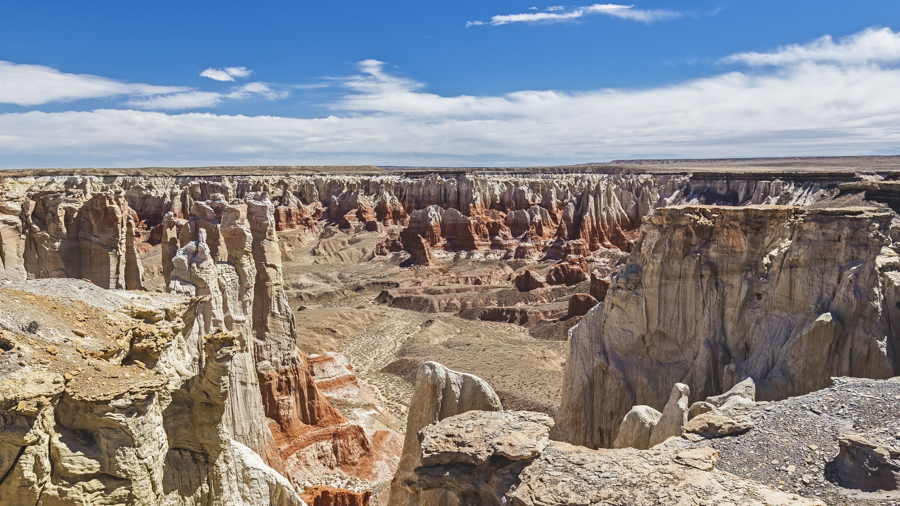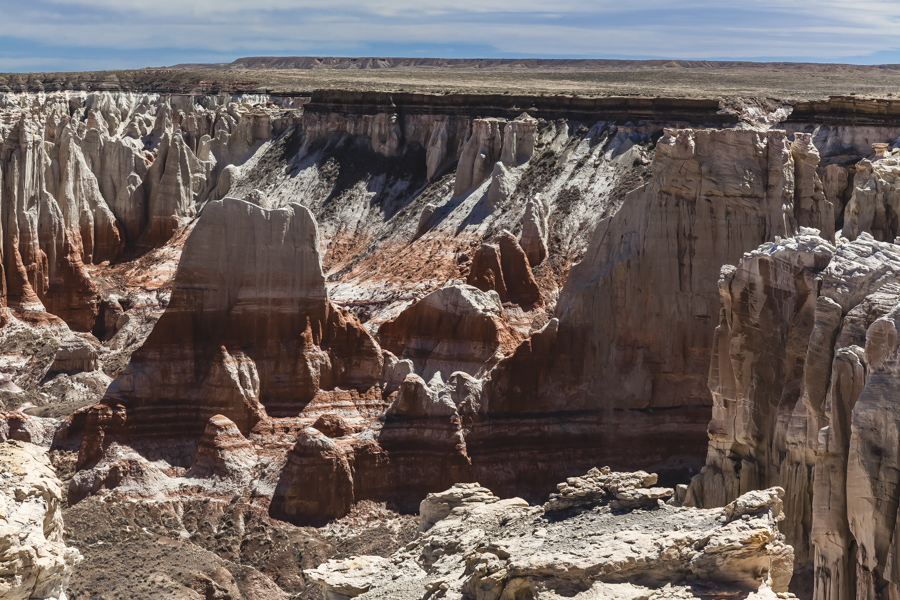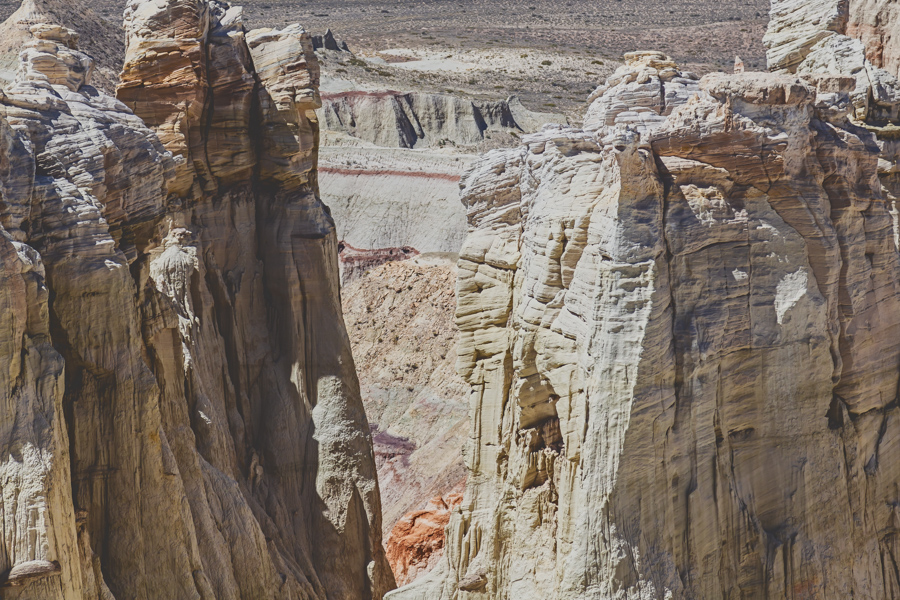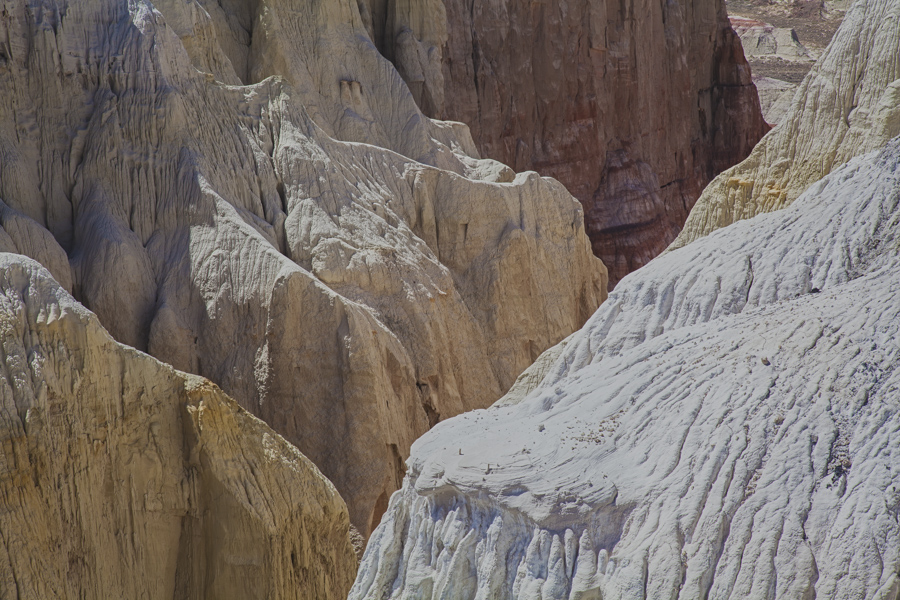Today’s post features pictures from the final stop on last month’s photography tour to northern Arizona and southern Utah. Coal Mine Canyon is located on the border between the Hopi and Navajo Indian Reservations in the vast desert of northeast Arizona, about two hours south and east of Page. It is not very well known, one of many remote, little-visited sites in the Southwest where the main interest comes from the detail of the rock – the colors, forms and textures of the eroded sandstone. Our party, including Barry Stewart, Bill McAdam and me was required to obtain a backcountry permit from the Navajo Tribal Authority to gain access. This permit does not permit descent into the canyon but we were not disappointed with the many great vantage points for photography along the canyon’s rim.
I begin with this panoramic view of the canyon looking south. This expansive canyon is cut into a flat, featureless, grassy plateau, Coal Mine Mesa. Both are named for the thin, low grade deposits of coal that are found scattered across the area, and are prominently visible in parts of the upper canyon.

This view of the canyon displays some of the many hoodoos to be found in the canyon and along its edges. Hoodoos are tall, thin spires of rock that protrude from the bottom of an arid drainage basin (badlands). Hoodoos typically consist of relatively soft rock topped by harder, less easily eroded stone that protects each column from the elements. Note the banded colours of the different strata of sedimentary rock, exposed by wind and water erosion.

This view offers a better sense of the rock’s detail, its many colours and details. The effects of erosion on the rock are prominently visible, evidenced by the rugged surfaces of the hoodoos. The canyon is not deep by comparison to the larger, better know canyons in the southwest (e.g. the Grand Canyon), about 360 feet deep.

Today’s final photo is my favourite from Coal Mine Canyon. It’s a tightly framed view of a narrow, side canyon off the main gorge. I like the shapes, colours, shadows and detail that create this almost abstract image.

This was my first visit to this area and I was very positively impressed. I hope to return on another of my photographic forays, preferably early morning or early evening to capture the effects of more favourable light.

Nice compositions, Peter, that capture the magnificence of the place. Good work in harsh light, and I suspect, as you do, that early morning or evening shots would be even more spectacular. Thanks for the information on hoodoos, also.
Incredibly unique rugged splendour!!
Wonderful pics!